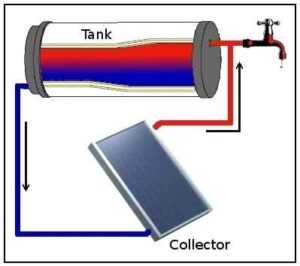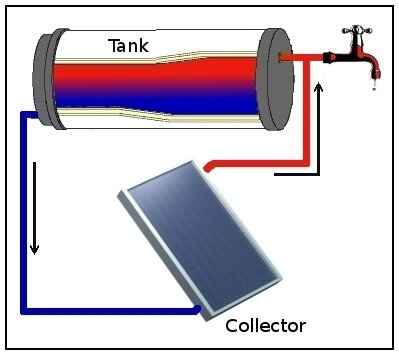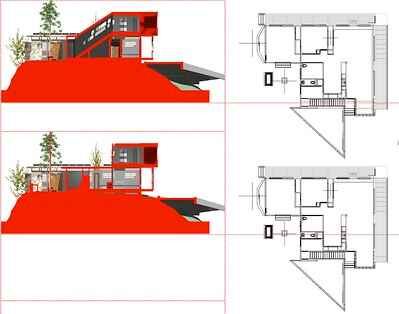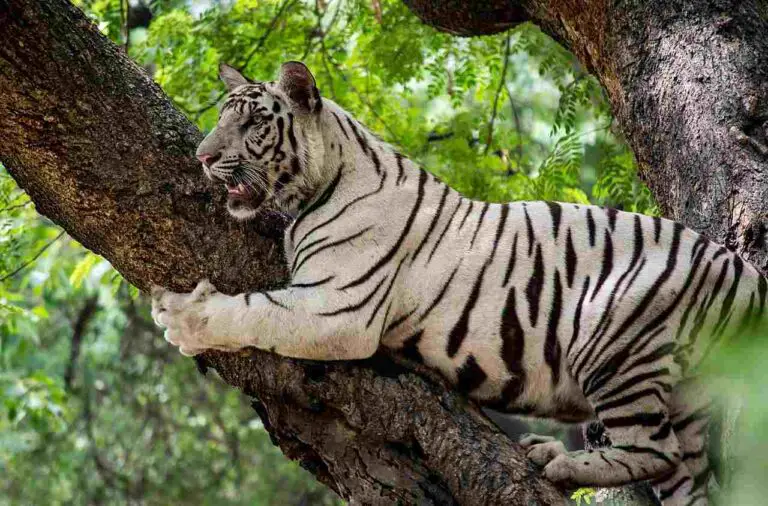5 Examples of Convective Heat Transfer Explained
Examples of convective heat transfer are; open OTEC pumped systems, domestic water heating, geothermal reservoir dynamics, mammalian blood circulation and electric fan operations.
This article discusses the examples of convective heat transfer, as follows;
1). Open OTEC Pumped Systems (as one of the Examples of Convective Heat Transfer)
An open-cycle OTEC system is a system that uses the temperature gradient in oceans to generate electricity, using seawater as the working fluid. It differs from closed-cycle OTEC systems that use a low-boiling point fluid as working fluid.
Open-cycle OTEC systems depend on convection as a major energy transfer mechanism to facilitate the circulation of thermal energy in seawater [6].
Pumps may be incorporated into the system, to improve the circulation of the working fluid, which in turn improves heat transfer, steam production, and electricity generation.
The presence of pumps implies that the convection process can be categorized as 'assisted', which is one of the types of convective heat transfer, and differs from other types like natural/free, and forced convective heat transfers.
Asides open-cycle systems, other types of OTEC systems like closed-cycle and hybrid systems, also depend on convective fluid circulation to maintain the heat cycle and hydrothermal gradient that are both needed for the operation of these systems.
2). Domestic Water Heating
Convection is one of the mechanisms by which heat is transferred in a domestic hot water system.
Water heaters use both convection and conduction to transmit thermal energy from a source into water in a reservoir or tank [4].
In a hot water tank, warmer water masses are less dense and occupy the upper regions of the tank; while cooler water masses are denser and occupy the lower regions of the vessel.
Where a heat source is provided, the heat is introduced into the water reservoir first by conduction (from the heat source, such as electric coil, to water masses in close contact with this source), and subsequently by convection from the hotter water masses to cooler water masses.
A simple model that can be used to observe convection in domestic water heating is a conductive water vessel on a burner. In this model, thermal energy is directly supplied by conduction from the burner to water in the vessel, which then circulates this energy through convection.
Aside burner-type systems, convection can also be observed in domestic water heaters that use solar energy as a primary heat source [3].

3). Geothermal Reservoir Dynamics (as one of the Examples of Convective Heat Transfer)
Geothermal energy uses two main kinds of heat transfer, which are; conduction and convection [1], although radiation also plays a role in the transfer of geothermal energy from one point in the subsurface to another.
Water in geothermal reservoirs is heated by nuclear radioisotopes in the Earth's core, whose radiant heat is usually conveyed in rock, which could be either solid form or molten magma.
A geothermal reservoir works by circulating hot water under pressure, using convective cycles that are driven by heat from hot rocks and magma.
Convective heat transfer is essential for the functioning of geothermal power plants that depend on wells drilled into geothermal reservoirs [10].
Pumps can be used to improve water cycling in geothermal plants, in addition to the circulation of geothermal fluid through heat exchangers. This application results in what is known as an Enhanced Geothermal System (EGS) [9].
4). Mammalian Blood Circulation
Heat in the blood comes mainly from metabolic activities, and may be transferred from one part of the body to another by both conduction and convection [7].
Convection works in blood circulation by the continuous movement of blood and its dissolved constituents in such a manner that less-dense, warm blood continuously replaces and mixes with cool blood. This mechanism prevents overheating, by enabling excessive body heat to be released to the environment through the peripheral blood vessels.
It must be noted that all three types of thermal energy transfer occur in the bodies of warm blooded organisms, where conduction and convection are mostly internal, and radiation helps to dissipate excessive heat to the surroundings.
Heat transfer also occurs between blood vessels by conduction [2].
The type of convection that governs blood circulation is forced convection, because pressure from the pumping activity of the heart is mostly responsible for blood cycling, which leads to heat transfer.

5). Electric Fan Operation (as one of the Examples of Convective Heat Transfer)
The method of heat transfer used by electric fans is forced convection, where the 'force' refers to air pressure exerted on the environmental system by the mechanical rotation or oscillation of part(s) of the fan.
Convective heat exchangers use fans to provide mechanical force for driving fluids in convectional cycles that facilitate heat transfer [8].
One of the innovative developments in electric fan technology is the piezoelectric (PE) fan, which comprises of oscillatory components attached to piezoelectric actuators, in a design that provides better energy efficiency than conventional fans.
Studies have reported up to 260 % increase in heat transfer efficiency by piezoelectric fans [5], which are designed mainly based on the forced-convection model.
Conclusion
Examples of convective heat transfer are;
1. Open OTEC Pumped Systems
2. Domestic Water Heating
3. Geothermal Reservoir Dynamics
4. Mammalian Blood Circulation
5. Electric Fan Operation
References
1). Abbasi, M.; Madani, M.; Moraveji, M.; Sharifi, M. (2018). "Effects of Convection and Fracture Boundary Conditions on Heat Transfer Shape Factor in Fractured Geothermal Reservoirs." Springer, Transport in Porous Media 125(5). Available at: https://doi.org/10.1007/s11242-018-1122-2. (Accessed 1 April 2023).
2). Barozzi, G. S.; Dumas, A. (1991). "Convective heat transfer coefficients in the circulation." J Biomech Eng. 1991 Aug;113(3):308-13. Available at: https://doi.org/10.1115/1.2894889. (Accessed 2 April 2023).
3). Groenhout, N. K.; Morrison, G. L.; Behnia, M. (2000). "Heat Transfer Analysis of Advanced Solar Water Heaters." 7th Australasian Heat Transfer and Mass Transfer Conference, Townsville. Volume 2000. Available at: https://www.researchgate.net/publication/237609775_Heat_Transfer_Analysis_of_Advanced_Solar_Water_Heaters. (Accessed 1 April 2023).
4). Kara, Y. A.; Arslanturk, C. (2004). "Modeling of central domestic water heater for buildings." Applied Thermal Engineering 24(2):269-279. Available at: https://doi.org/10.1016/j.applthermaleng.2003.07.002. (Accessed 1 April 2023).
5). Kim, K.; Yeom, T. (2013). "Numerical study on channel-flow convection heat transfer enhancement with piezoelectric fans under various operating conditions." Applied Thermal Engineering, Volume 219, Part D, 25 January 2023, 119674. Available at: https://www.sciencedirect.com/science/article/abs/pii/S1359431122016040. (Accessed 2 April 2023).
6). Lim, S.; Yoon, J.; Lee, H.; Kim, H. (2023). "Performance Evaluation of Control Compatibility for an OTEC Pump Shutdown Condition." J. Mar. Sci. Eng. 2023, 11, 155. Available at: https://doi.org/10.3390/jmse11010155. (Accessed 1 April 2023).
7). Luchakov, I. I.; Nozdrachev, A. D. (2009). "Mechanism of heat transfer in various regions of human body." Available at: https://www.researchgate.net/publication/297512843_Mechanism_of_heat_transfer_in_various_regions_of_human_body. (Accessed 1 April 2023).
8). Stafford, J.; Waish, E.; Egan, V. (2009). "Characterizing convective heat transfer using infrared thermography and the heated-thin-foil technique." Measurement Science and Technology 20(10):105401. Available at: https://doi.org/10.1088/0957-0233/20/10/105401. (Accessed 1 April 2023).
9). Xu, R.; Zhang, F.; Jiang, P. (2015). "A review on heat transfer and energy conversion in the enhanced geothermal systems with water/CO2 as working fluid." International Journal of Energy Research 39(13):1722–1741. Available at: https://doi.org/10.1002/er.3352. (Accessed 1 April 2023).
10). Yueqiang, M.; Quan, G.; Yanjun, Z.; Xuebing, Y. (2022). "Experimental study of heat transfer between fluid flowing through fracture surface with tortuous seepage path." Renewable Energy, Elsevier, vol. 188(C), pages 81-95. Available at: https://doi.org/10.1016/j.renene.2022.02.026. (Accessed 1 April 2023).






